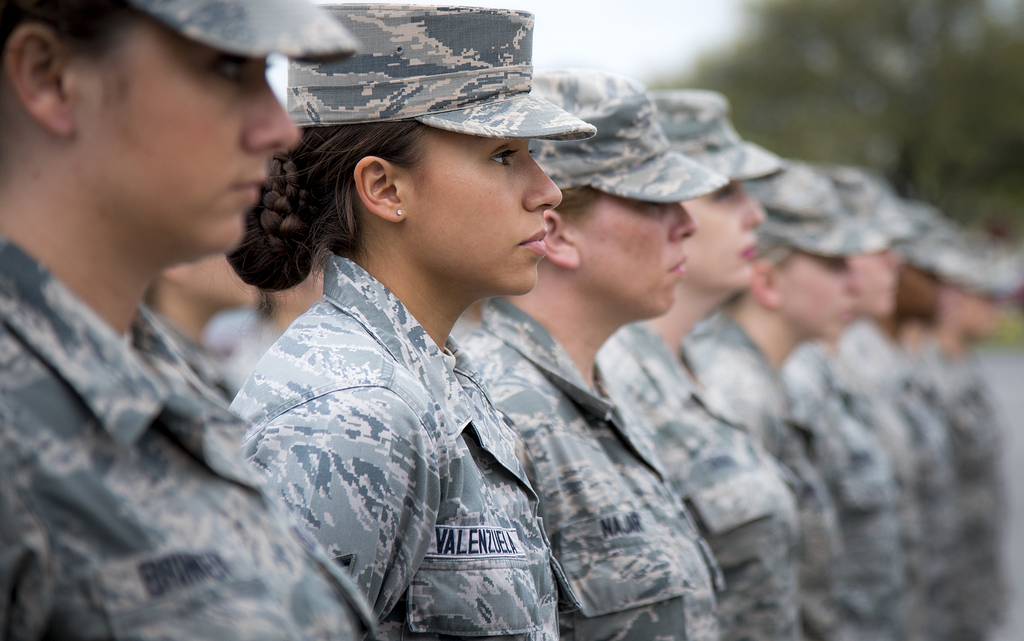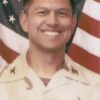
Air Force personnel from the 96th Medical Group stands at parade rest as part of an all-female formation prior to the base retreat ceremony on March 30, 2017, at Eglin Air Force Base in Florida. (Samuel King Jr./Air Force)
On June 8, Assemblymember Lori Wilson introduced Assembly Concurrent Resolution (ACR) No. 205 which proclaims June 12, 2022 as Women Veterans Recognition Day and urges all Californians to join in celebrating the many contributions of women to our armed forces.
ASM Wilson represents California’s 11th Assembly District which encompasses portions of Solano and Contra Costa Counties including the Cities of Vacaville, Fairfield, Suisun City, Rio Vista, Antioch, Oakley, and Brentwood. The draft ACR was submitted by Nestor Aliga, Life-Member of The American Legion Manuel L. Quezon Post 603 in Vallejo, CA.
ACR#305 reads:
WHEREAS, Women Veterans Recognition Day and Women Veterans Appreciation Day is the anniversary of the day the Women’s Armed Services Integration Act (Public Law 80-625, 62 Stat. 356) was signed into law by President Harry S. Truman on June 12, 1948, and prior to then, only women nurses could serve in the regular and reserve forces during peacetime; and
WHEREAS, There are almost 2,000,000 women Veterans in the United States, the territories of the United States, and abroad according to the United States Department of Veterans Affairs (USDVA), and nearly 163,000 women veterans make California their home according to the California Department of Veterans Affairs (CalVet); and
WHEREAS, Women are the fastest growing group in the veteran population, as they account for approximately 10 percent of the overall veteran population today, and it is projected that women will make up 18 percent of the veteran population by 2040; and
WHEREAS, Women have played vital roles in wars and conflicts throughout United States’ history, including serving as soldiers, raising morale, and spying on the enemy during the American Revolution; and
WHEREAS, During the American Revolution, women served on the battlefield alongside the men, mainly as nurses, water bearers (also known as “Molly Pitchers”), cooks, laundresses, and saboteurs, and despite United States Army regulations that only men could enlist, women who wanted to join in the fighting circumvented the rules by masquerading as young men and boys; and
WHEREAS, More than 400 women fought in the Union and Confederate armies during the Civil War; and
WHEREAS, Women have formally been a part of the United States Armed Forces since the inception of the Army Nurse Corps in 1901 but have informally served since the inception of our nation’s military; and
WHEREAS, During World War I, about 35,000 women officially served as nurses and support staff in components such the Signal Corps Female Telephone Operators Unit (also known as the “Hello Girls”); and
WHEREAS, In 1917, when the United States Navy announced it would open enlistment to women, about 12,000 female yeomen entered the United States Navy and filled a variety of jobs, including draftsmen, interpreters, couriers, and translators; and
WHEREAS, Three hundred seven women enlisted in the Marine Corps during World War I. Like their sisters in the United States Navy, they were limited to the enlisted ranks and worked mainly in Washington, D.C., doing various administrative jobs. Women’s service contributions in World War I showed they either had or could quickly learn nontraditional skills needed by the military; and
WHEREAS, Following Pearl Harbor, Congress authorized new women’s components for each branch of the military and increased the number of active duty positions in the Army and Navy Nurse Corps. In May 1942, the United States Army was given the authority to establish the Women’s Army Auxiliary Corps. The United States Navy, Coast Guard, and Marine Corps followed suit; however, rather than making women an auxiliary component, they opted to enroll women in the reserves on the same basis as their male counterparts. The United States Army Air Forces enlisted nearly 1,100 female civilian volunteers who earned their silver wings as Women Airforce Service Pilots (WASP); and
WHEREAS, In World War II, 140,000 women served in the Women’s Army Corps (WAC) and performed critical jobs, such as military intelligence, cryptography, and parachute rigging; and
WHEREAS, In August 1943, the Women in the Air Force and the Women’s Flying Training Detachment merged into a single unit for all women pilots known as the WASPs, who flew more than 60,000 miles in two years; and
WHEREAS, During World War II, the 6888th Battalion, nicknamed “Six Triple Eight,” was formed as the first and only all Black female WAC unit to be deployed overseas, and their motto was “No Mail, Low Morale”; and
WHEREAS, At the end of World War II, in 1945, about 280,000 of the approximately 12,000,000 people who remained in the armed forces were women; and
WHEREAS, With the passage of the Women’s Armed Services Integration Act of 1948, women became a permanent part of the United States military, but the act continued to restrict women to 2 percent of the military population. That restriction was finally lifted in 1967 with the amendment of the Women’s Armed Services Integration Act, which also opened senior officer ranks to women; and
WHEREAS, The early 1990s were a historic time for women in the military with over 40,000 women deploying in support of the Persian Gulf War, making women service members more visible in the eyes of the public. In addition, in 1992, the National Defense Authorization Act repealed combat exclusion laws that had prevented women from flying combat aircraft; and
WHEREAS, Women who have served in the United States military are often referred to as “invisible veterans” because their service contributions went largely unrecognized by politicians, the media, academia, and the general public until the 1970s; and
WHEREAS, Though women have been officially serving in the military since 1901, they have not always been considered qualified for veteran status for the purpose of receiving benefits from the USDVA; and
WHEREAS, Even after women were granted veteran status, issues of access, exclusion, and improper management of their health care still remained; and
WHEREAS, In the late 1970s and early 1980s, many of the contributions made by women in World War II were formally recognized through laws that granted these women with veteran status for their time in service. This opened the doors for women to take advantage of programs, opportunities, and benefits from the federal government, state governments, the USDVA, and other veteran service organizations; and
WHEREAS, In 2008, the USDVA’s Women Veterans Health Strategic Health Care Group began a five-year plan to redesign the nation’s health care delivery system for women, and a fundamental component of this plan was to ensure that all women veterans had access to comprehensive primary care from skilled women’s health providers; and
WHEREAS, Even though the USDVA and CalVet have introduced initiatives designed to improve health care access and quality of care for women veterans, women veterans disproportionately do not use their hard-earned veterans benefits; now, therefore, be it
Resolved by the Assembly of the State of California, the Senate thereof concurring, That the Legislature hereby proclaims June 12, 2022, as Women Veterans Recognition Day and urges all Californians to join in celebrating the many contributions of women to our armed forces; and be it further
Resolved, That the Chief Clerk of the Assembly transmit copies of this resolution to the author for appropriate distribution.
YouTube videos of Vallejo Veterans events are at: https://www.youtube.com/channel/UC3GVapYb-jM1Jf8IvynKveQ













